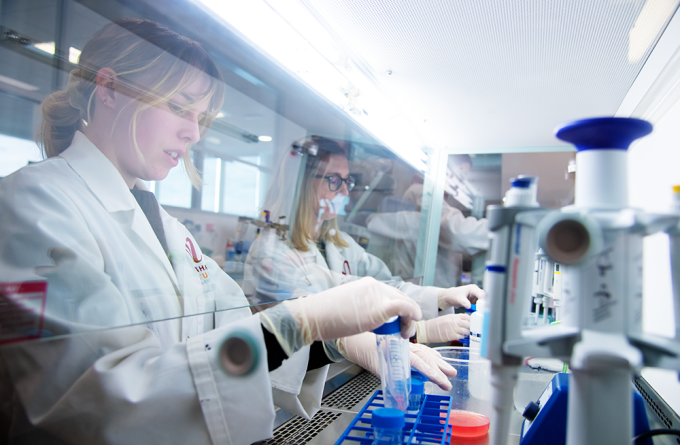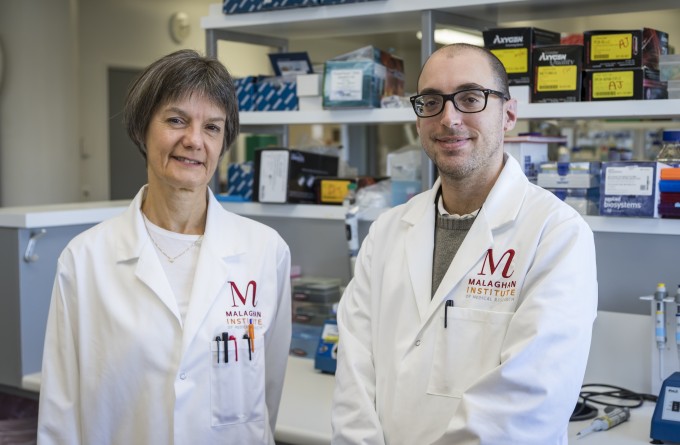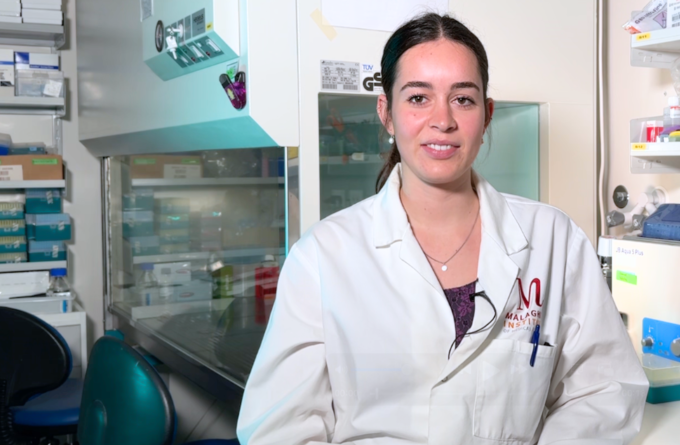5 June 2025
New research from the Malaghan Institute has offered insight into how allergic responses are sustained in the skin, identifying key signalling pathways involved in replenishing allergy-inducing dendritic cells. Disrupting this cycle could offer a new way to interrupt allergic responses and provide relief for people living with allergic diseases.

Ronchese Laboratory team members Abbie Larson and Dr Sotaro Ochiai
Dendritic cells are an essential component of the immune system. These ‘sentinels’ patrol the body, constantly sampling the environment for signs of infection or damage. When they detect pathogens, such as a bacteria or viral particle, they engulf them, travelling to the nearest lymph node to present their findings to T-cells, which then launch an appropriate immune response.
However dendritic cells can also present harmless things like pollen, peanuts or soy to the immune system as if they are as harmful as a virus, kicking of an allergic response – a process that typically first develops in early childhood and can continue throughout the lifetime.
Once dendritic cells have presented their findings to the immune system, their role is complete. The cells often initiate ‘apoptosis’ – or programmed cell death – and are replaced by new dendritic cells produced in the bone marrow.
“Previous research in the Ronchese lab found that there is a steady population of allergy-inducing dendritic cells in the skin. The development of these cells is supported by a chemical signalling molecule called IL-13, which is present even when there’s no active inflammation,” says Senior Research Fellow Dr Sotaro Ochiai.
The lab’s latest findings, published in The Journal of Investigative Dermatology, go one step further to look at how these cells are replenished following their migration to the lymph node during active allergic skin inflammation.
“We followed these cells over time to understand how they returned to the skin and what is needed to replenish them. We found that IL-4, a molecule related to IL-13, was important for this mechanism and contributes to the persistence of allergic diseases.”
What causes dendritic cells to pick up allergens and present them to the immune system as a threat is still unknown. However, being able to disrupt this cycle in places like the skin may interrupt the allergic response.
“In the Ronchese lab, our allergy research focuses on two main goals. One is preventing the development of allergies in the first place, the other is finding ways to interrupt existing allergic responses. We hope that this kind of research might one day lead to novel strategies to provide relief for people suffering from allergic disease.”
Related articles

Dr Kerry Hilligan awarded Sir Charles Hercus Health Research Fellowship
2 December 2025

Marsden funding to drive discovery and innovation in cancer, allergy and infectious disease research
5 November 2025

Malaghan alumni series: Professor Paige Lacy
14 October 2025

Cancer, measles and allergic disease research funded in latest HRC grants round
19 August 2025

Tracking allergies to their source: new research offers insight into mechanisms priming the allergic response
2 July 2025

The immune system’s misinformation problem
27 June 2025
